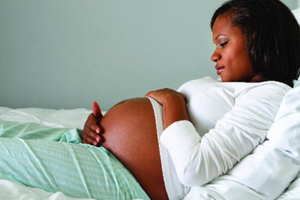Pros and cons of water births for baby and mother

What you need to know:
- Water birth is gentle and less stressful for the mother and baby.
Normal delivery and cesarean section are two of the most widely known methods of delivering a baby.
In both cases, an expectant mother may go to a health facility or have a midwife help her deliver the baby at home.
However, over the past one decade, more women in Kenya have been opting to deliver their babies via water birth.
This alternative enables an expectant mother to experience her labor while immersed in water.
According to Professor William Stones, an obstetrics and gynaecology expert and researcher, water birth is gentle and less stressful for the mother and baby.
The popularity of this alternative delivery method has been mainly driven by preference for relaxation and less intense labour pains.
Dr. Janet Thuthwa, an obstetrician gynecologist, says women who deliver their baby via water birth report having less painful contractions during the first stage of labour.
“This is facilitated by the warm water in the delivery tub. That the baby has been in the amniotic sac for nine months also means that a water birth provides an almost similar and gentler environment for the baby, [to come into]” she says. New medical research echoes these advantages.
However, Prof. Lisa Kane - who led the medical team of researchers at the University of Michigan’s School of Nursing - says it is important to note that “there are no differences in the outcomes of water birth and normal vaginal birth for neonatal intensive care admissions and postpartum haemorrhage rates.”
Safety dilemma
In most cases, during a water birth, expectant mothers are asked to leave the birth pool or tub just before delivery.
This is due to the safety dilemma that continues to riddle the decision to have full water birth or not.
“The risks have been highlighted as including neonatal infections or cord tearing in certain case studies,” Prof. Kane said. The baby and the mother are brought out of the water almost immediately.
This is usually before the placenta is delivered so that blood loss is more accurately calculated.
Prof. Stones also explained that when the baby is born, cold air usually stimulates the first gasp, which inflates the lungs.
Under water, the baby does not breathe hence does not inhale the water. A baby takes the first gulp of air after surfacing.
There are also several risk factors that an expectant mother ought to bear in mind when considering a water birth.
“Water births are inappropriate where the risk of infections from diseases such as herpes is high, or where there is preeclampsia, unstable baby’s heartbeat, and excessive bleeding,” says Dr. Thuthwa.
There are mothers who cannot have water births: those with high blood pressure, diabetes, hepatitis, HIV, complicated labour or induced labour.
In addition, mothers expecting to deliver more than one baby are not allowed to use water births, as are mothers whose babies are either in breech position or require electronic monitoring of their heartbeat.
Warm water
Dr. Thuthwa explains why a water birth pool or tub usually contains warm water: “The process works with warm water, which is usually maintained at about 37 degrees celsius to keep both the mother and the baby warm."
On his part, Prof. Stones explained that the warm water, set at 36–37 degrees, is very relaxing during the first stages of labour when the contractions intensify.
The labour pain is lessened by the buoyancy of the water and enables the mother to move around easily or change positions.
The warm water also relaxes the muscles of the uterus. In turn, this helps the mother cope with the contractions as the baby positions itself for delivery.
Prof. Stones also explained that during heartbeat monitoring, the mother is required to surface from the water “every 15 minutes during the first stage of labour, and every five minutes, or after each contraction during the second phase while active pushing is going on for the midwife to listen to the baby’s heart beat.”
In Kenya, some of the facilities that provide for water births are Aga Khan University Hospital, Eve’s Mama, and the Royal Gardens Hospital.
The Royal Gardens Hospital was the first hospital to provide for water birth deliveries in Kenya.
In a public statement, though, the hospital advocates for normal births where there have been no pregnancy complications.
Women in the rural areas
The advent of water birth in Kenya, though, is not expected to be an option for millions of women in the rural areas due to the costs and accessibility issues of the process.
“Urban Kenyan women have a higher proportion of birth preparation, delivery options, and complication readiness in contrast to rural expectant mothers,” says Dr. Thuthwa.
“These options include water births and elective cesarean section, of which the latter is a last [option in case of complications] for the rural pregnant woman.”
According to the Economic Survey 2019, in 2018, there were 938,900 normal deliveries, 155,100 cesarean deliveries, 4,000 assisted vaginal deliveries and 9,200 breech deliveries. The survey however did not provide data for water birth deliveries.
But with the benefits far outweighing the risks, water births are expected to boost the country’s endeavours towards reducing mortality rate.
Currently, maternal mortality remains alarmingly high with between 300 and 400 deaths per 100,000 live births in Kenya.
According to the Kenya Demographic and Health Survey, between 2007 and 2014, Kenya had a maternal mortality ratio of 362 deaths per 100,000 live births from 2007 to 2014.
In 2017, the maternal mortality ratio was 342 deaths per 100,000 live births.



